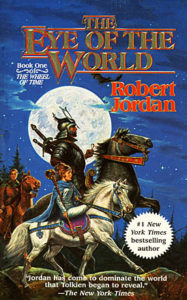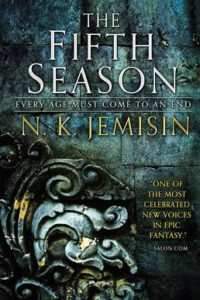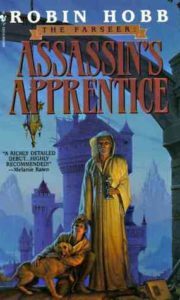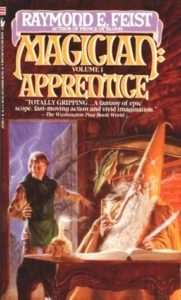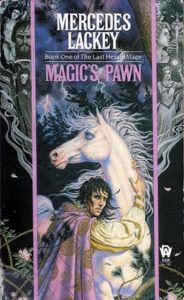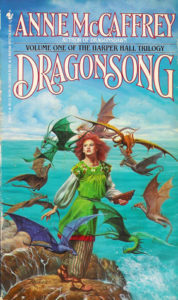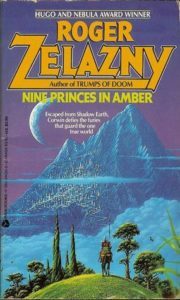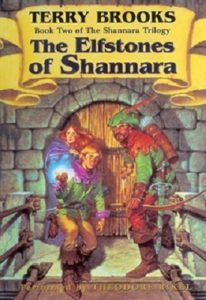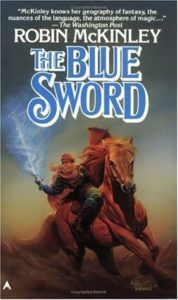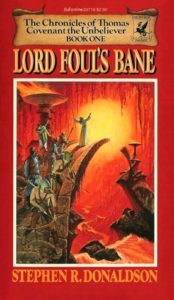Randy Henderson's Blog
April 5, 2023
WRITING OPENINGS TO GRAB A READER, AGENT, EDITOR
You’ve got the first sentence to make someone want to read your first paragraph (and the first paragraph to make them read the first page, and the first page to make them read opening chapters).
Actually, you have the book or story title to get them to read the book/story description, then that description to get them to read the first line, but that’s a whole other discussion.
So what is the common wisdom on ways to a write story opening that grabs and engages your readers?
1) Writing an Opening HookYour opening hook needs to flow naturally into the rest of the story, be true to it, match its tone and style, and not feel like a gimmick or a standalone bit of cleverness just to get the reader’s attention. It perfectly sets up the reader for the journey to follow.Ways to “hook” your readers include:Open with a shocking or funny statement or fact;Setting up a situation that leaves the reader with a question that they feel they just have to keep reading in order to get answered;Show the main character with a problem the reader wants to keep reading to find out more about and see resolved (more on this below);In general, connecting with the reader, grabbing their interest, and then rewarding that with an interesting and satisfying second sentence, then paragraph, etc. that flows naturally from that first hook.Sometimes an opening line may be the thing that inspires the rest of your story to begin with.
If not, consider waiting until you’ve written your full first draft to go back and start massaging the opening line, as your entire opening may change to fit what you end up actually writing for your ending.
–
2) Engage Us with Your Dramatic OpeningStart with a DRAMATIC scene with the character facing some kind of conflict or challenge in their normal life. Dramatic doesn’t mean soap opera, it just means characters are DOING and SAYING things they care about and have some kind of feeling about. Something is at stake for the character.Starting with “action” does not mean opening with a fight scene or chase scene etc it just means something is actually happening in the scene, it isn’t infodump etcStart in a riveting Now. Do not start with a flashback, or a dream, or them in the now but just sitting thinking about something that happened in the past, etc. Start with something happening now that the character cares about and by extension we care about.Start at the right point in the character’s story. Start in a compelling place, as close to the inciting incident as possible while giving us just enough time to meet the protagonists and understand their existing wants, goals, flaw etc before the fit hits the shan.You may need to write the whole story/ book before you can go back and really know where it starts. You may have done a bunch of “getting into the story and character” writing to start that will need to be cut. Or by the time you get to the end of the story or book you will know the character much better and the ending will have changed, and that will tell you the perfect opening to set us up your ending and the character’s path to it. Avoid rewriting the opening a hundred times before ever writing the ending.Start with a BRIDGING PROBLEM to carry you to the Big Problem. Since the inciting incident that reveals the Big Problem hasn’t happened yet (when the aliens invade or the dark lord sends his minions to kill the hero etc.) you may present some other challenge the character faces as part of their normal life, to bridge the gap until the Big Problem really starts.For Novels this might be the opening chapter(s). For short stories, this might be the opening paragraphs (though in very short stories might just open with the inciting incident and backfill the character details/ motives as the story unfolds).–
3) Help Us Visualize/ Immerse Ourselves in the Story as Quickly as PossibleGive us an idea ASAP who the active characters in the scene are. You do not need to fully describe them, just give us a quick establishing info so we can visualize who is in the scene, where the dialogue is coming from.Include dialogue but don’t Open with it. Ideally you should have some dialogue in the opening. Interactions (especially with tension) is extremely engaging and shows something actually happening. But don’t literally start with a line of dialogue before we even know who is speaking or what their situation is or why we should care. Don’t give us voices floating in a white void to start.Don’t introduce too many new characters too close together too early.Give us enough setting description so we are grounded in the scene and the characters are not in a white void/ Matrix loading program (or if they are floating in white void, describe that).Use setting to set context and mood and atmosphereof the scenes.Imagine a conversation between a mom and a daughter in an expensive restaurant at a members-only resort. The mom is telling the daughter she really should go to college and stop wasting her life. Now imagine the exact same conversation in a prison, with the daughter behind a bullet-proof plastic window. Now imagine it in a mine on an asteroid as they are performing hard and dangerous work. Imagine the conversation on a sunny day delivered in a light tone, versus on a day with dark, oppressive clouds as the mother speaks in a cold tone. Setting matters and is a character itself.Avoid dense paragraphs of description up front. No matter how interesting the history of this world or context of this scene etc just describing it is not very engaging reading.Thread the description of characters and setting in through the dialogue and action as much as possible. Don’t give paragraphs of description of the history of the mage guild and the war that established their rule of the city and Captain Jarvin’s history with all of that. Instead: City Watch captain Jarvin Nevill strode the length of the supposedly impenetrable vault, the clomp of his boots and swishing of his chain shirt echoing off the stone walls of the empty space that had been filled with the Mage Guild’s wealth and most dangerous artifacts only hours earlier. “Well damn,” he said to the scowling greybeard in blue guild robes watching from the vault entrance. “This must be embarrassing, hey?”Avoid throwing the reader out of the story, make the prose accessible at the start.Avoid overly experimental styles or tons of unexplained terms or complicated puzzles that stump the reader etc right up front. If your reader feels confused, frustrated or made to feel stupid they won’t continue reading. Ease them in. You can surprise the reader and do something unique to your style or world or story, just don’t confuse them.
–
4) Set the Reader’s Expectations for the Rest of the BookGive clues to the genre/subgenre. Is it second-world fantasy, or historical fantasy, or cyberpunk, or space opera, or horror, or sci-fantasy, etcEstablish Tone and Voice (is it dark or humorous or darkly humorous, is it in a voice of high regency literary prose and formal speech or in the voice of a common uneducated street thief, etc)Use setting and character details to help establish reader expectations for the story’s era, level of technology and magic, what is normal vs strange, etc.Setting details, character clothes and props, the way characters speak and behave, etc. all help to establish things like:The general era or equivalent (ancient, medieval, Regency, current, future, etc);Is it our world (past, present or future), or alien planet, or a fantastical other world/reality etc;the general type and level of technology or magic (is it steampunk, or high medieval fantasy, or cyberpunk, or space opera etc. How common is the special magic or tech, how is it viewed, etc.)What perspective we are coming at the story from (if fantasy, is your character moving in the circles of nobles, or of street thieves? Etc.)–
–
DIGGING DEEPER INTO THE OPENING OF YOUR CHARACTER ARC5) Choosing the Problem Your Character Faces in the Opening (Want/Need/Flaw Of Character Arc)The dramatic paragraph, scene, chapter etc you open with that establishes a character’s normal life shows them striving for their WANT (the thing they think will make them happy) but failing because of their FLAW, which hints at what they NEED in order to actually be happy (and if they achieve victory over the Big Problem by the end of your story it is often driven by finally acknowledging and addressing their Need).A WANT is what the character desires and could maybe obtain, but they won’t do what’s needed to get it, or try but fail, because what they actually “need” is different and is holding them back.Chasing their “want” is often an attempt to mask the pain of the need or to avoid acknowledging the need. A NEED is subconscious, something they lack but aren’t aware of or are in denial about. They will never be fully happy until addressing it, yet they resist facing it or changing until forced to by the events of your story, by the growing costs of not facing it.Need examples are: self-acceptance/love; ability to trust others or themself; redemption, or atonement, or accepting blame, or forgiving oneself for something; forgiving others; accepting an unwanted duty; or overcome greed or selfishness to be selfless, altruistic or heroic. The need is usually driven by a WOUND or FLAW, and is often caused by some earlier event or experience that is traumatic, or abusive, or guilt-inducing, and manifests in the character’s life. When we meet your character at the start, why would we think “Wow, this person has deeper issues and could use a good therapy session if they ever want to be truly happy.” Example: If the character is unable to trust others, we must SEE that flaw dominating their life. They have a chance at something good but blow it because they don’t trust someone. And show it in multiple facets of their life if possible. How does it affect their work to not trust people? How does it affect their family or love life?And you can have a secondary character outright mention the character’s need in some subtle way, e.g. offer a bit of advice or express concern about their flaw, to set that seed in the reader’s mind, even though the protag will brush it off and be in denial at this stage of the story.Avoid cliché’ characters and character traits (the hard boiled detective, the mad scientist, the sultry seductress) unless you are subverting or flipping the trope in some way. The problem the character faces can also reveal a lot about the setting and world we are in.–
6) After We Meet the Main Characters, the Inciting Incident/ Catalyst for Change (And For Reader To Want More)The Big Problem presents itself in an Inciting Incident: After establishing the characters and their normal world, external events (the plot) happen that upend that normal world – the Inciting Incident (aliens invade; person is suddenly exposed to the world of magic and is in immediate danger; person stumbles upon a conspiracy and flees from assassins, etc)The Big Problem should be something that forces your character out of their normal life and makes the reader question how the character will be able to recover from it.Show your character resenting or questioning or in denial about the need to do anything about it, knowing that taking action might require uncomfortable change; or if they obviously have no choice, show them questioning their readiness and ability to deal with it, and trying to prepare themselves as a means of externally reflecting their inner doubts. Or you can have them confidently attempt to solve the problem right away if that reflects their flaw.The character makes a first attempt to solve or avoid the problem, but they fail. They are trying to get back to pursuing their previous way of life, to chasing their Want. They try to solve or avoid/escape the Big Problem the way they’ve already been dealing with their Bridging Problem and most problems in life, and are undermined or driven by the same Wound/Flaw, so they fail. They have not yet been changed enough by the events of the story to be the person to actually help solve the problem.We are propelled into the story as promised in the query/ on the back of the book, the adventure/ struggle that will make the agent/ editor/ reader want to keep reading and want the rest of the book if they don’t already have it.–
FINAL THOUGHTSPracticeWhen you read, look for opening lines that “hook” you.You might also try writing a “first sentence a day” as an exercise or way to kick off your writing session, or when you are in a rut. Some of them might just grow into full stories or articles.Famous First Lines“Last night I dreamt I went to Manderley again.” Rebecca by Daphne du Maurier
“We were somewhere around Barstow, on the edge of the desert, when the drugs began to take hold.” Fear And Loathing In Las Vegas by Hunter S Thompson
“Once there was a giving tree, and she loved a little boy.” – The Giving Tree by Shel Silverstien
“In a hole in the ground there lived a hobbit. Not a nasty, dirty, wet hole, filled with the ends of worms and an oozy smell, nor yet a dry, bare, sandy hole with nothing in it to sit down on or to eat: it was a hobbit-hole, and that means comfort.” The Hobbit by J.R.R. Tolkien
“As Gregor Samsa awoke one morning from uneasy dreams, he found himself transformed in his bed into a gigantic insect.” The Metamorphosis by Kafka
–
Dig Deeper into this SubjectThe following books go deeper into much of the information shared here:
“The First Five Pages” by Noah Lukeman“Beginnings, Middles, & Ends” by Nancy KressSave the Cat: Writes a Novel by Jessica BrodyMarch 29, 2021
RPG-Inspired Laughs: Brief Awakenings
BEHOLD! A short, funny fantasy story about a gelatinous cube named Rümba!
As a fan of Terry Pratchett and Douglas Adams I promise it’s as good as every book shelved just below theirs at the Thrift Store!
Buy it now! Rate it when you’re happy, or possibly drunk!Please and thank you 
This story was inspired by the adventures of the Dungeon Scrawlers (and just because I needed a fun and silly palate cleanser between larger projects).
Enjoy! And thank you.

January 27, 2020
Adventures in DnD Streaming!
I am excited to be playing in an “actual play” DnD livestream on GenCon’s Twitch channel as a member of the Dungeon Scrawlers!

Our group is called The Dungeon Scrawlers because we are a group of professional fantasy authors, and DnD game and novel writers.
A lot of my time the past couple of months was happily consumed by learning to create images (like the ones here) in Photoshop, as well as building out our website and Social Media presence etcetera. All good skills to hone in general, and it scratched that creative itch at the same time.

I hope you’ll check out www.dungeonscrawlers.com to see info on the players, the characters, NPCs, setting and more!
And of course I hope folks will tune into the live show, currently on twitch.tv/gencontv every Wednesday at 6:30PM PST!

I am currently playing a Dwarf Cleric named Rogar Battlebairn.
Having never played a dwarf nor a cleric before, it has been fun digging into the lore and history around them, and coming up with a character background that I hope will be both entertaining, and provide lots of opportunity for some rich character arcs.
And now, I hope to turn the bulk of my focus back to my fiction (in between the games). 
April 27, 2019
THE VALUE OF BOOKSTORES AND DISCOVERY PART 1: READER EDITION

In celebration of Independent Bookstore Day and inspired by
a recent debate on the interwebs, I’ve compiled some thoughts on the role of
bookstores: how they are (and aren’t) changing, the conflicts between profit
and discovery, physical versus online sales, and their future.
STOCKING WHAT SELLS VS
PROMOTING NEW VOICES
B&N and other
booksellers first and foremost stock what sells in order to make money. If they do not, they will go out of business and
there will be even fewer places where new books can be physically shelved or
discovered at all. Thus shelves may have
a lot of books written long ago by guys like Tolkien or Jordan or
Shakespeare. This is similar to the
reason big publishers continue to publish new editions of those same books by Tolkien
and Jordan et al: because these reliable big sellers subsidize their ability to
invest in new authors with low or uncertain profitability.
HOWEVER, it is also
true that bookstores help readers
discover new authors while browsing.
This is, in fact, one
of the most important functions any physical store serves regardless of product
– discovery through browsing.
This is part of the reason Amazon is opening physical
bookstores – less about trying to get into a dying market, but more about controlling a critical proven way many
people “discover” new books or authors today. In other words, Amazon is replacing the lost free
marketing they used to get from people browsing bookstores, as ironically more physical
stores are pushed out of business by their online sales.
In fact, every book
in an Amazon bookstore is face out. HOWEVER, the few stores Amazon has built so
far are much smaller than B&Ns – so they
are deliberately curating and pre-selecting what they want buyers to “discover.” One can assume they will heavily promote books
they have some stake in.
This demonstrates the
importance of discovery – and of fighting for variety and diversity in what is available to be discovered.
Importantly, however, having
a book in stock to sell is not the
same as taking up prime real estate by facing multiple copies of established
books/authors that do not need to be “discovered.” If a customer comes to a bookstore wanting
J.R.R. Tolkien or Robert Jordan, they likely know they are looking for Tolkien
or Jordan and do not need to “discover” them.
And for those who didn’t come looking for those books, it is likely that
they need only a single image or book to prompt them to buy a copy of something
by that author.
So successful bookstores often find a way to balance the
service of discovery with the needs of stocking what sells.
HOW WE DISCOVER BOOKS
IN BOOKSTORES (AKA THE GLORY OF INDIE BOOKSTORES)
The number one way
people discover and buy new books, period, is still word of mouth.
But what makes us stop in a bookstore and pick up a book by
an author we don’t already love or haven’t
heard of?
A catchy title helps.
But it is the cover art that often grabs us and makes us even pause to
consider the title, and/or a good hook or blurb on the cover that sparks our
curiosity. This of course requires us to see the cover. Yet not every book can be shelved face out if
the bookstore wants to stock a decent quantity and variety of books. And
not every book can be featured on prominent displays or endcaps.
Indie stores are
great in mitigating this fact, even though they still have many of the same
problems as a chain like B&N – even more so since they have less room and
fewer things like toys and tchotchkes and Nooks subsidizing their meager book
profits.
Indie bookstores, however, often employ an engaged and well-read staff who help decide what to stock — tailored to local interests and tastes — and
also helps readers discover authors. This
is where they shine in my opinion. A
good staff or store owner will make
recommendations to readers, add staff review and recommendation notes to
shelves, and usually have staff-recommended book sections in the store etc.
all of which helps readers discover new authors even when the book is spine out. Basically, they sell by their own “word of
mouth”.
It is doubtful chains with top-down one-size-fits-all marketing
and book promotion like B&N will invest in staff and give individual stores
the flexibility to do this.
But there are surely other
ways B&N can also improve this balance between stocking bestsellers and promoting
discovery.
For example, Video Game stores do not stock every copy of a
new game on the shelf, they may have a couple representative cases you can take
to the register and they will pull the stock from behind the counter or
backroom, then they return the shelf-copy to the shelf. Why not do so with Tolkien and Jordan et al?
I am sure there are even better solutions than this that smarter
people than me can come up with, and it would be in their own best interests to
do so if they want to add additional value over Amazon.
YET IN-STORE DISCOVERY
AND STOCK DOES NOT EQUAL IN-STORE SALES
To make all of the above even more complicated, customers have increasingly shown a habit
of discovering something in a physical store, then ordering that item online
from wherever they can get it cheapest.
So just as important as stocking and facing books to promote
discovery, places like B&N need a model that will encourage customers to purchase the discovered books through
their store rather than Amazon or another online retailer, so that the stores
are incentivized to promote discovery of new authors rather than only promote the
reliable sellers.
Amazon’s stores do this by not putting a store price on the
books in the store. When you checkout,
the cover price is discounted based on factors like Prime membership etc.
This also means that
independent stores have to have and promote online purchasing options for that
same store that are easy to access and use.
Of course, an indie bookstore cannot offer Amazon Prime
prices on books without quickly going out of business. And the value and convenience of Amazon’s
self-publishing platform, and of things like the ability to buy an ebook directly
from your e-reader together with a discounted audiobook that synchs with where
you leave off so you can move between them seamlessly are frankly hard to
compete with. That is why it is
important for readers to feel like the bookstore offers some value beyond
another point of sale.
That’s why Independent
bookstores also bring additional value to
readers and communities beyond recommendations, such as author events, book
clubs, children’s storytime, not to mention other community activities like
trivia nights and wine tastings that the
book sales support. The bookstore is
a place to hang out and bond and celebrate books. And while readers are hanging out, surprise
surprise, they talk about what books they like – i.e. they discover books
through word of mouth from other readers.

It is important then
that readers come to understand that the discovery and community value of
bookstores is worth the cost of buying in those bookstores. I know I have to remind myself of this
from time to time, and so try to remind others.
After all, people
give more money in tips to their barista, waiter or Lyft driver per drink or
meal or ride than they save on the cost of the average book on Amazon. So why not buy that book in the store and
consider the extra dollar or two as a tip to the bookstore owner for a job well
done.
Bottom line, independent bookstores offer value to readers when
they help readers find new favorite authors, have online purchasing options for
books not in the store, and offer community events. In other words, when their customers feel the
value they get from the bookstore goes beyond finding the cheapest price.
But as readers, we
need to sometimes remind each other that value exists in the face of the
overwhelming convenience and pricing of places like Amazon. Not necessarily to drive Amazon out of
business, especially as a channel for self-published authors, but to create a
truly competitive environment in which independent bookstores and even chains
like B&N can all thrive together, filling different needs at different
times.
April 21, 2019
Tips for Writers doing a Reading
Here are some things I’ve learned as an author giving readings of my work:
Do not select a piece that fills your entire reading time. If your reading slot is 30 minutes, PREPARE A 15 MINUTE PIECE (with a 5 minute extension prepared in case you end up rush-reading it and are left with extra time). If your reading time is 1 hour, select at most 30 minutes of reading material with a 10 minute buffer (though that much time just sitting quietly and listening to you read can be a bit much to put an audience through).
What about the rest of the time?
You will need a few minutes to say hi and do intros and get started.
If the piece you are reading needs some setup and context, you will need time for that.
And you may want some time for questions and answers after the reading, to engage with your audience and increase their interest in you and your work. Be prepared with a few example questions to help prime the pump and get the Q&A rolling as the audience may be shy at first in asking questions. Or loosen up the audience with some trivia questions, anecdotes or jokes.
Convention readings end early. If you are reading in a convention type setting rather than a bookstore, you need to be completely done AT LEAST 5 MINUTES EARLY so your audience can exit and make it to their next panel, and so the next reader’s audience can come in and get seated — if you run right up to your end time, then you are technically eating into the next reader’s time and making your audience late for their next event.
Rehearse. Practice reading loudly, clearly, with emotion and dramatic pauses. Try not to read monotone or have description and dialogue run together, make it clear through change of tone and voice when you are speaking as a character versus narrative text, and to the best of your ability give different characters slightly different voices.
Practice a good reading pace.
Check Yourself before you wreck yourself. During the actual reading, adrenaline and nerves will kick in and may cause you to read really quickly, or softly — be aware of it and be practiced at resuming a normal reading pace/voice.
Edit your piece for reading out loud. What is written on the page does not always translate well into out-loud reading. e.g. you may need to add additional dialogue tags to make clear who is speaking, or conversely if you have something like “she said in a sarcastic tone” you can cut those words and just actually say it in a sarcastic tone.
I also make performance notes on mine. E.g add extra spaces or ellipses or a note to visually remind me to give a dramatic pause, or a short pause for comedic effect before delivering a humorous line; underline words I want to emphasize or punch up; put in hyphens or caps in the middle of words to make sure I emphasize the middle syllable when desired; add a character’s name in front of a particular piece of dialogue script-style so I am sure to use the right voice, etc. Because no matter how much I rehearse reading the piece, I sometimes will just run over the words in my nervous excitement otherwise.
Choose what to read wisely. Select an excerpt or piece that has some emotional drama, or humor, or best of all both. Humor really does go over best in readings in my experience if that is an option. And most importantly, something that leaves the audience caring about what happens next to the character you read.
And either select a piece that gives us the context we need for the scene, or straight up give us summary context before reading it. Listening to action scenes is boring if we don’t know and care about who is fighting or what is at stake for example. And a big information dump that highlights your awesome research or your cleverly constructed world or tech or magic system or take on ghosts etc. may be boring without drama involved, without something actually happening in the scene.
Take a picture of your audience. Preserve the memory of those early days before you became rich and famous. And make a note at the top of your reading piece like “Take Picture!” otherwise, if you’re like me, you will forget in the excitement of the moment and won’t remember until everyone has stood up and left.
HAVE FUN! This is not a test, you are not being judged, you are sharing your passion and joy for the genre with others who have passion and joy for the genre, and celebrating that you did what so many others have not — actually put the words on the page and shared them with the world.
Easter as Opportunity
Easter. There is a real chance for celebration and creating a modern miracle here by not forgetting where this day comes from, and by celebrating that in a very real way.
This day, which has been a day of celebrating life and renewal throughout human history, can be an opportunity to donate time or money to life-affirming organizations that help the sick and dying, or that offer renewal in people’s lives by providing housing, or job aid, or counseling, or addiction treatment, or shelter from abuse, or bringing renewal and new life in communities by renovating schools and playgrounds and parks, building community gardens, and more.
Imagine the impact if just the millions of people sitting in a pew today listening to sermons about Easter instead organized and went forth to manifest the spirit of Easter, if they donated those two hours and that 10% tithe toward supporting life and renewal in a very real and tangible way today. That is millions of labor hours and billions of dollars in a single day.
Add to that the millions more who are not in church on
Easter but might be moved to join such efforts.
Imagine how many lives would be saved, how many communities would be
transformed, how our world would be renewed, from just one day’s effort.
That, to me, would make for a truly holy and special Easter. Goals for next year, perhaps?
On a more spiritual and less tangible level, Easter can also
be a chance to get in touch with this line of tradition and commonality that unites
all of humanity throughout history, to celebrate what makes us the same, not
different.
The Spring Equinox has been a time to celebrate life and
renewal as observed by religions and cultures dating back to ancient Egypt,
Persia, and beyond.
If we trace the celebration of this time back to its earliest origins probably in Africa, it celebrated the resurrection of the husband of the Great Earth Mother Goddess. The name itself is believed to trace back to the Anglo-Saxon goddess Eastra/ Eostre, the goddess of spring, celebrated at this time. So this holiday’s roots span human history and the range of human cultures from ancient Africa to western Europe.
The earliest Christians acknowledged this in their own way. The Council of Nicaea (who you might know from such hits as “Selecting which books went into the Christian Bible,” or “Making the Holy Trinity official doctrine”) chose the date for Easter in 325AD based on the common and ancient pagan celebration of the Spring Equinox — a celebration of renewed life and the change that comes with spring seeming a natural fit for celebrating resurrection.
This was common practice of the early church, to align their
holy days with already existing pagan holidays to make it easier to convert
folks who would not have to give up the (often drunken) celebrations they already
knew and loved. Acknowledging that should
not be a threat to Christians, but an opportunity to embrace the reverse today and
celebrate the true spirit of Easter.
And if you really want to dig into just how much the
Christians truly share with non-Christians, the Christian story of the
resurrection is well known to be based on and influenced by earlier resurrection
myths. As just one of many examples, in the
epic Sumerian myth of Tammuz and Inanna (Ishtar) written on tablets dated back
to 2,100 years before Jesus was even born, Inanna is judged, stripped of her
clothes, killed and hung on display during which life on earth begins to
die. She is then resurrected after three
days, restoring life to the world.
The Descent of Inanna is just one of many such earlier
resurrection myths with undeniable parallels to the Jesus story, and many come from
older religions in areas of Hebrew captivity such as Egypt (the story of
Osiris) and Babylon (the story of Bel), and from the New Testament authors’ more
contemporary cultural influencers like the Greeks (Adonis) and the Romans.
The eating of colored eggs can also be traced back to Egypt and Persia, where they symbolized creation, fertility, and even resurrection. And of course rabbits have always been seen as symbols of fertility, a stand-in for fertility gods/goddesses.
I would hope acknowledging that Easter celebrates not just
one resurrection story, but a deeper celebration of life and renewal that spans
virtually every culture and age of human existence should not be seen as a diminishing
of modern religious stories or beliefs but a call to a deeper truth and
connection.
So let us also make Easter a celebration and reminder that even across nations and continents and the vast gulf of centuries, at our deepest roots we are so much the same, and share so much in common, that to lift up our neighbor is to lift up ourselves – an important reminder in these divisive times.
March 20, 2019
Why I am Not Paneling at Norwescon This Year
Norwescon is awesome.
Let’s just make that clear right up front. This is not about them. I was invited to be a panelist this year and
I politely declined for “me” reasons. I want
to talk about those, I guess in case it is helpful for others.
I have been blessed to participate in Norwescon for a number
of years. And every time, it has been a
joy and an honor. I do not view it primarily
as a promotional opportunity (though I do not ignore that benefit). I also do not view it as some earned and
expected acknowledgment of my status as a published author, because that is not
what it should be (and because I began paneling before I was professionally published).
So why am I not participating this year?
I guess first because of Imposter Syndrome, and a bunch of deeper weird feelings I am working through and will probably write posts about someday, that comes in part from being “Between books.”
I had a trilogy published by Tor, the last book of which I
finished writing in 2016 (though it came out in 2017/2018).
I have not yet finished my next project(s). I am not blocked, I’m making good progress, it
just takes time to write books and I have gone a couple years without finishing
one (at least, in a publishable state), and am at least a year or two from
being published again if all goes well (which is not guaranteed).
This is all normal writer journey stuff, and is all fine
from an expectations standpoint. To be clear,
I am not sad about Finn Fancy ending with book three, truly. And I have no assumptions or entitled
feelings that my next work will or should
be published just because my last was.
But it is still a weird place to be identity-wise when standing up on a panel as a “pro.” Yes, the struggles and work of writing the novels is exactly the topics of many panels. It is hard to explain my exact and full feelings about it all, even to myself, but there are a couple of reasons for my choice not to be a panelist that I can name:
First, on a more practical level, I take my responsibility as a panelist seriously and wanted to be able to offer something fresh.
For Norwescon specifically, this is my home con, my first
con, and the con I have most participated in.
So when I was looking at the list of proposed panels this year, I
realized I had spoken on most of the topics in one form or another in past
years.
In those past panels, I shared my experience and lessons as an
emerging and newly published author. But
I have done that.
Panels are for me a responsibility to the audience. And I felt that the Norwescon audiences — filled
with faces that have become familiar to me — should be given the chance to
hear different voices share different experiences and lessons on these topics. Preferably diverse voices.
Next year, once I finish my current projects and succeed or
fail with them, once I process and analyze all these weird feelings, once I can
step back and look at HOW I wrote these next books and dealt with the various struggles
involved, I feel I will have gained and processed enough new experiences and
lessons that I could accept an invitation to be a panelist if extended (no assumptions).
The second part, the more subtle and insidious I guess, is
this feeling like: I don’t want to be perceived as sort of a one-hit wonder who
is still doing tours 20 years later, reliving past glories. So in the meantime I am trying to prove to myself that I am something more than a one
hit wonder, and am focused on writing my future projects rather than talking
about my past experience.
I am, in essence, trying to focus more on being a “writer”
than an “author,” at least until I (hopefully) am again a newly published
author.
I will still be
participating in workshops and critiques, because I do still want to support
and lift up other writers, and I still learn so much from participating in
critiques myself.
I also will likely
participate in MisCon and World Fantasy Convention this year (if put on panels),
because I skipped them last year for
similar reasons (and WFC especially is in a different part of the world). As a result, I will be in rooms filled with people
who I have not already shared my past experience and lessons with, and will
feel I am (hopefully) adding value to the panels (and thus I’ll be able to fake
my way past the Imposter Syndrome).
Finally, I do also hope to participate in Norwescon this
year as a volunteer, to still contribute and pay it forward in that way. And if you see me in the hall and have
questions I can answer, I am happy to do so to the best of my ability. I am not locking myself in a dark room alone
or saying I have nothing to offer, I am just trying to be realistic and
responsible in how I put myself out there as a writer and author.
So, hope to see you at Norwescon!
PS: I almost didn’t post this because the voice in my head said a) who cares why you do or don’t do anything, and b) whatever your reasons it still sounds like entitled and privileged whining. I chose to post it anyway, in case someone else is feeling the same way and struggling to put words or reasons to the feeling — and just to prove to myself that the voice in my head doesn’t control me.
What Being a Convention Panelist Means to Me
Genre Cons like Norwescon have to me always been a
celebration of fandom, of the genres and content we love. You do not have to be a “pro” or PhD or
celebrity to do that, on or off panels.
I do see participating as a “pro” to be a humbling responsibility, and to be taken seriously.
What this means for me is I spend the weeks leading up to a
con preparing for my panels, knowing that in a 50-minute panel I may only have
10 minutes total speaking time, and will need to make the most of those minutes
– those minutes that everyone in the room has chosen to spend listening to this
panel on this topic.
It would be disrespectful not to honor their time. This means much research and note taking and
prep time, and sometimes coordination with the other panelists (especially if I
am moderating). I try to never just walk
in assuming I know enough to wing it.
I also try to be as entertaining as I can, so that those
minutes are not boring, and people leave feeling not just informed, but also
energized and excited to further explore or implement the ideas discussed.
Finally, I try to listen as well as talk, to learn from and
support the audience and the other panelists and expand on their points rather
than just waiting for them to finish speaking so I can make my own point. At least, I try. Always room for improvement.
This again all requires a lot of time, and during the panels
it requires an enormous amount of energy, at least for me.
I am not complaining, at all. I am happy to do that work, to invest that
time and energy when I feel that I have something to offer. I am paying it forward, for all the times I
sat in a workshop or panel and felt inspired, or got a tip or bit of knowledge
that made something click for me, that helped me get over a hurdle and on to
the next level in my writing.
And again, I am participating in the excitement and love of
our shared genres and artforms and that is such a joy and a privilege.
There is also a certain amount of that other kind of privilege
I enjoy, both as a cis white male and as a traditionally published author, that
I try to use to promote and discuss topics like diversity and access in panels
or to support voices on the panel that are maybe being trampled over, which is
another kind of responsibility I take seriously.
In fact, that is part of the reason why I often come
prepared with handouts on the topic, for example. It is first because I, again, take my
responsibility to the audience seriously.
But I also want to be able to share what helpful information I can with
the audience yet not take up that time speaking when there is, for example, an
underrepresented or marginalized voice on the panel that I would rather support,
and learn from myself.
And finally, I acknowledge that promoting oneself and one’s works is part of the benefit for being on a panel. But I don’t think it should be the motivation, or the driving purpose. The audience did not attend the panel to be sold my books. They attended to learn how to write their own books, or to join in celebrating some aspect of our genre. That is why I try to avoid, for example, using examples from my own works to illustrate points, or taking up time talking about something very specific to my work that may not be as useful to the audience as a more general example or concept.
So in short, being on a panel is a privilege, and a
responsibility, and should be a joy. It
is not a right, and it is not a marketing gimmick. And ultimately, it is not about you, it is
about giving the audience the most informative and entertaining and inspiring experience
possible.
October 4, 2018
Pretty in Pink Original Ending
I made a thing, just for fun. I got a copy of the book for Pretty in Pink that has the original Duckie Wins ending, and provide some commentary, analysis and trivia on the movie, the pros and cons of the possible endings, and then read the original ending. Enjoy!
May 15, 2018
A Foundational Fantasy Reading List
I was recently asked for recommendations for “entry books to fantasy.”
Well, different people like different things of course, and there are many subgenres of fantasy so for this list to be of manageable size I will limit myself to the more classic second-world sword and magic type fantasy (and we will just assume Lord of the Rings is somewhere in there).
The list is also, naturally, limited by the books I’ve actually read (which may not be the books others have read).
I will start with a few modern fantasy series, then dig into the more classic series that I think are broadly popular and would form a pretty solid foundation in fantasy for a reader.
My recommendation would be to alternate between reading one of the modern fantasy series recommendations, then a classic series, then another modern series, etc.
RECENT FANTASY:
I will get into the most trouble here for omissions probably, but that is just because nobody can have read all the books that everyone else has read, and I can’t even remember all the books *I* have read and LIKED, there are just too many. And again, tastes vary, and I am not covering things like Urban Fantasy here. But off the top of my head:
The Fifth Season by NK Jemisin. An example of the best of what modern second-world fantasy can be.
Farseer: Assassin’s Apprentice by Robin Hobb. A great series for well-developed characters and emotional rollercoaster plots.
Children of Blood and Bone by Tomi Adeyemi. An Avatar Last Airbender/ Korra homage done right, that swaps in West African culture for the Asian culture and is deeply impactful in the world it depicts and the story it tells. I think this is a good example of how to make readers feel impacted by an issue you care about without it being preachy or an essay.
City of Stairs by Robert Jackson Bennett. A nice break from McEuropean worldbuilding. Starts slow then you can’t stop turning the pages.
The Mistborn series by Brandon Sanderson. His most accessible series I think, a good showcase for his skill with creating cool magic systems. His more epic fantasy style series, Stormlight Archive, I find to be bloated with description and exposition that really bogs me down, but that’s a taste thing, many people love that level of detail in their fantasy.
Lies of Locke Lamora by Scott Lynch. Roguish fun with brilliantly depicted characters.
by Patrick Rothfuss. A LOT of people love this book, and he does good things with his money. I loved the language, and the worldbuilding, not so much the meandering plot, or the completely random ending. But again, this is hugely popular, so I tend to just assume I’m missing something. There really is lots to love about his writing, and certainly this book influences lots of folks and will come up in most conversations about fantasy books.
Foundational Classics I Found Fun to Read
These will build a strong classic fantasy foundation. Again, not counting LOTR:
Wheel of Time by Robert Jordan. A sort of culmination/ kitchen sink of all the earlier commercial epic fantasy up to its time, a good fun place to s tart if you want to read just one series maybe, but it is14 books and he gets bloaty/ bogs down a bit from book 6-11. Bonus, you’ll be able to make jokes about well-turned calves and tugging braids with everyone, and discussing the series’ pros and cons. It’s sort of like a fun boot camp for commercial epic fantasy. Certainly read Eye of the World.
Riftwar Saga (Magician, Silverthorn, Sethanon) by Raymond E. Feist. This classic has a wonderful arc that spans worlds, and lots of old school awesome magic. And I really loved the evolution of the main characters into heroes with the weight of the world on their shoulders.
Heralds of Valdemar by Mercedes Lackey. My favorite arc was “Last Herald of Valdemar” trilogy (starts with Magic’s Pawn). There is also Arrows of the Queen, her original trilogy, but she was still emerging as a writer during this and it shows a bit (PoV head hopping etc). And I also loved Oathbound and Oathbreakers. Again, these books have lots of FEELS, a cool magic system, and soul-bound magical horses among other things.
Dragonsong and Dragonsinger by Anne Mccaffrey (and the Dragonriders of Pern trilogy). The Dragonriders trilogy is one of the foundational classics of the genre (though arguably it is science fantasy), though I prefer Dragonsong/Dragonsinger for a quick and easy read with lots of FEELS and fire lizards!!! (think miniature dragons that act like cats)!
Wizard of Earthsea by Ursula K Le Guin. Quick read by one of the greatest writers.
Chronicles of Amber by Roger Zelazny. Another quick and easy read, one of the first 1st person perspective fantasy books I ever read, and it starts off in our world then quickly takes you on a journey to others. Also, the first book is a mystery as well.
The Golden Compass by Philip Pullman. A fantasy series with something to say.
Kushiel’s Dart by Jacqueline Carey. A prime example of good erotic fantasy with deep worldbuilding, intrigue and plotting.
Elfstones of Shannara by Terry Brooks. Just read a synopsis of Sword of Shannara (if you’ve read LOTR, no need to read Sword of Shannara, but it gives context for Elfstones). Read it before watching the show if possible.
Chronicles of Narnia by C.S. Lewis. Quick reads, what would be considered middle grade or YA today, and is heavily allegorical, but one of the cornerstones of fantasy for sure.
The Blue Sword by Robin McKinley. A kickass female lead and a strong influence on many fantasy writers, including I would argue on George RR Martin’s Daenerys and the Dothraki.
Dragonlance books by Margaret Weis and Tracy Hickman – Example of the right way to turn D&D into fiction, literally. I also highly recommend the Death Gate Cycle by Weis and Hickman, one of the best examples of creative worldbuilding and storytelling based on worldbuilding.
Vlad Taltos series by Steven Brust. Unapologetic rogue/ assassin character with a pet mini-dragon. Doubtless inspired future writers of rogues and assassins.
2X. Chronicles of Prydain: Like Narnia, this was a series many fantasy readers discovered at young age. Published in the 60s, it helped give us many of the tropes of later fantasy novels, and it gave us the most boring animated film from Disney to that time in “The Black Cauldron,” where I can only assume they were trying to emulate the dark somber tone of the animated Lord of the Rings — bad move, Mouse.
Foundational Classics that are maybe more difficult to read but round out your fantasy cred/ understanding of modern fantasy inspirations
Dragonbone Chair (Memory, Sorrow, and Thorn trilogy) by Tad Williams. This series influenced many fantasy writers to come, it took the tired McEuropean epic fantasy and reimagined it, added deep mythic and literary juice to them. That being said, for some reason I tend to bog down in book 2 while reading it personally. Totally worth pushing through and reading though, you will be rewarded for the effort.
Chronicles of Thomas Covenant by Stephen R. Donaldson. This one is very rich in worldbuilding and detail and magic, I escaped into the Land as fully as into any fantasy world, definitely one of the foundational works, but it is dark as heck, full of angst and internal struggle, and it has a rape scene early in the first book which, while the consequences play out across the entire series, it remains an obviously problematic and unpleasant issue with the book and the series.
The Belgariad by David Eddings. Lots of people who grew up reading fantasy in the 80s love this series. Me, all I remember is skimming a lot because it takes classic fantasy tropes you can get in other books, and adds lots of travel.
Basically, if your favorite part of the Lord of the Rings movies were those long bits where they are walking across mountaintops and rowing down the river and running across fields, then this is the series for you.
Gardens of the Moon: Malazan series by Steven Erikson. This is an ambitious series that spans generations, where you get to see the events of history play out and change the world. It is not an easy read, I would argue, very dense and doesn’t make things easy for the reader, but the scope is very impressive once you do.
The (early) Xanth books by Piers Anthony. These were the commercial candy of the fantasy world in the 80s, I devoured them in my early teens, and the early ones are arguably a fun easy read. They were hugely popular so if you want to be versed in a series that influenced many young fantasy readers then read the first book. But as my frontal lobe developed/ I broke out of my bubble I came to realize they get pretty misogynistic and borderline creepy at times, especially as the series continued. The Blue Adept series was, I thought as a young lad, cool in how it bounced back and forth between a fantasy world of magic and a scifi world with robots etc. but man, the misogyny really shows in that series and I can’t read it now without feeling icky. Incarnations of Immortality series is also by him, and was popular.
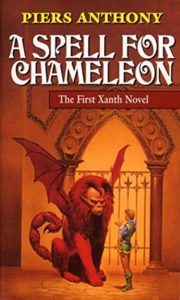
Before Anthony became obsessed with young women’s underthings…
HONORABLE MENTIONS
There are many books/series that I did not list above that are perfectly great but there’s a certain point after which a list of recommendations becomes so long that a reader doesn’t feel inclined to pick ANY of the books from it because there’s just too much info. I may have already hit that length, in fact.
And my list was meant as sort of “building a foundation in popular fantasy” reading list, not just a list of books I loved. But I still wanted to give a shout out to the following books/series I highly enjoyed as well:
A Darker Shade of Magic by V.E. Schwab (fun, fast fantasy read);
An Ember in the Ashes by Sabaa Tahir (No holds barred page turner!);
Steal the Sky by Megan O’Keefe (roguish fantasy fun!);
The Sword Dancer: Tiger and Del books by Jennifer Roberson (foundational)
The Last of the Renshai by Mickey Zucker Reichert (I threw the first book against the wall at the end, but then couldn’t stop myself from reading the rest of the series)
The Coldfire Trilogy by Celia S. Friedman (incredible worldbuilding with a living world, and villain as hero).
Psalms of Isaak series by Ken Scholes. Clever and fun fantasy/ science fantasy adventure that starts off with a bang. Literally, it starts off with a magical nuclear explosion.
Game of something or other by George RR Martin. I think there’s a TV series or something. People seem to like it. I found the books to be a bit dense to get through at times but good fantasy.
Book of Words series by J.V. Jones. A fun, straightforward fantasy that I enjoyed for its humorous observations by side characters, and the fact that it shows the characters actually learning and earning their skills.
Kingdoms of Thorn and Bone by Greg Keyes. A great series that really geeks out on and does interesting things with language and music, with deep worldbuilding and magic.
Master of the Five Magics by Lyndon Hardy. This is a foundational book for magic systems. It is, in fact, just one long geeking out about magic systems. It has influenced many fantasy writers, including myself.
Humorous Fantasy
I should also add that there are humorous fantasy series out there that fit within the sword and magic realm and are also pretty foundational, including:
37. The Discworld books by Terry Pratchett
38. Myth Adventures series by Lynn Asprin
IN CONCLUSION
Again, I’m sure I missed many series just for lack of having read them or them popping into my head as I wrote this.
And again, I was focused on sword and magic fantasy (high fantasy, epic fantasy, second-world fantasy et al) and not
URBAN FANTASY e.g. Dresden Files, or Mercy Thompson, or Twenty-Sided Sorceress, or Loose Changeling.
or YA FANTASY e.g. Harry Potter, or Throne of Glass.
or FANTASY ROMANCE e.g. Death’s Dancer
But if you find even one series that you truly love from this list I will be happy.


